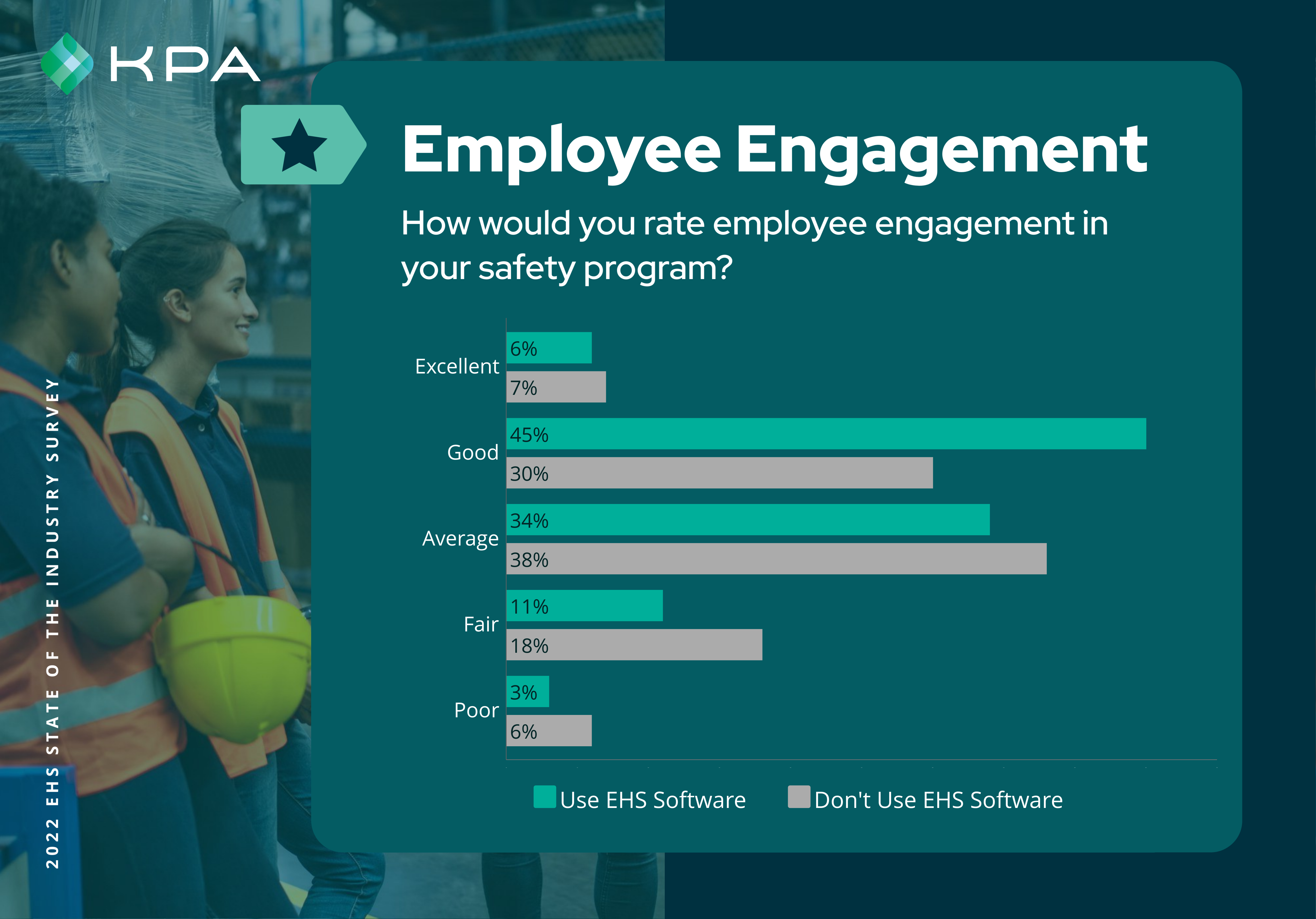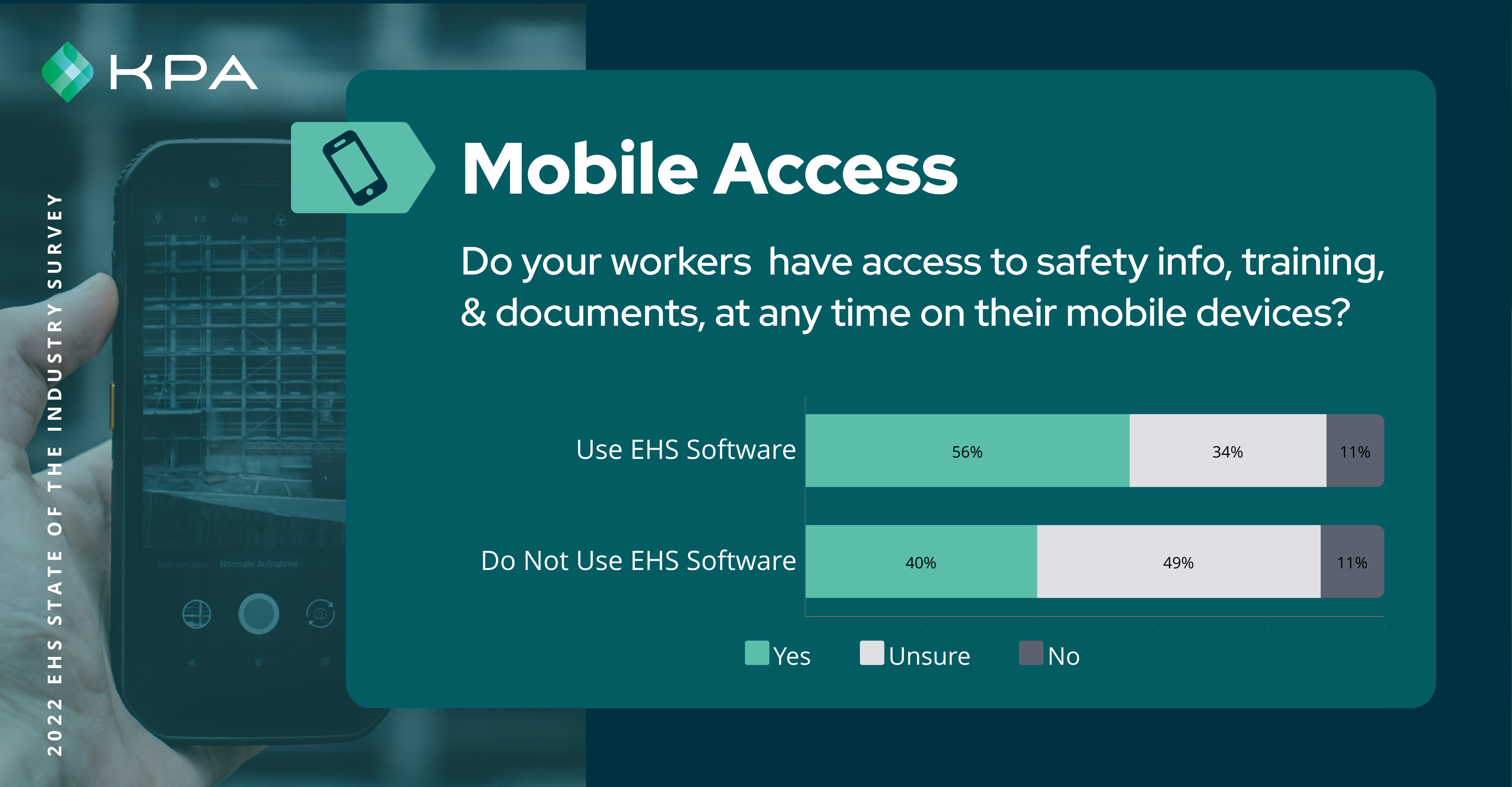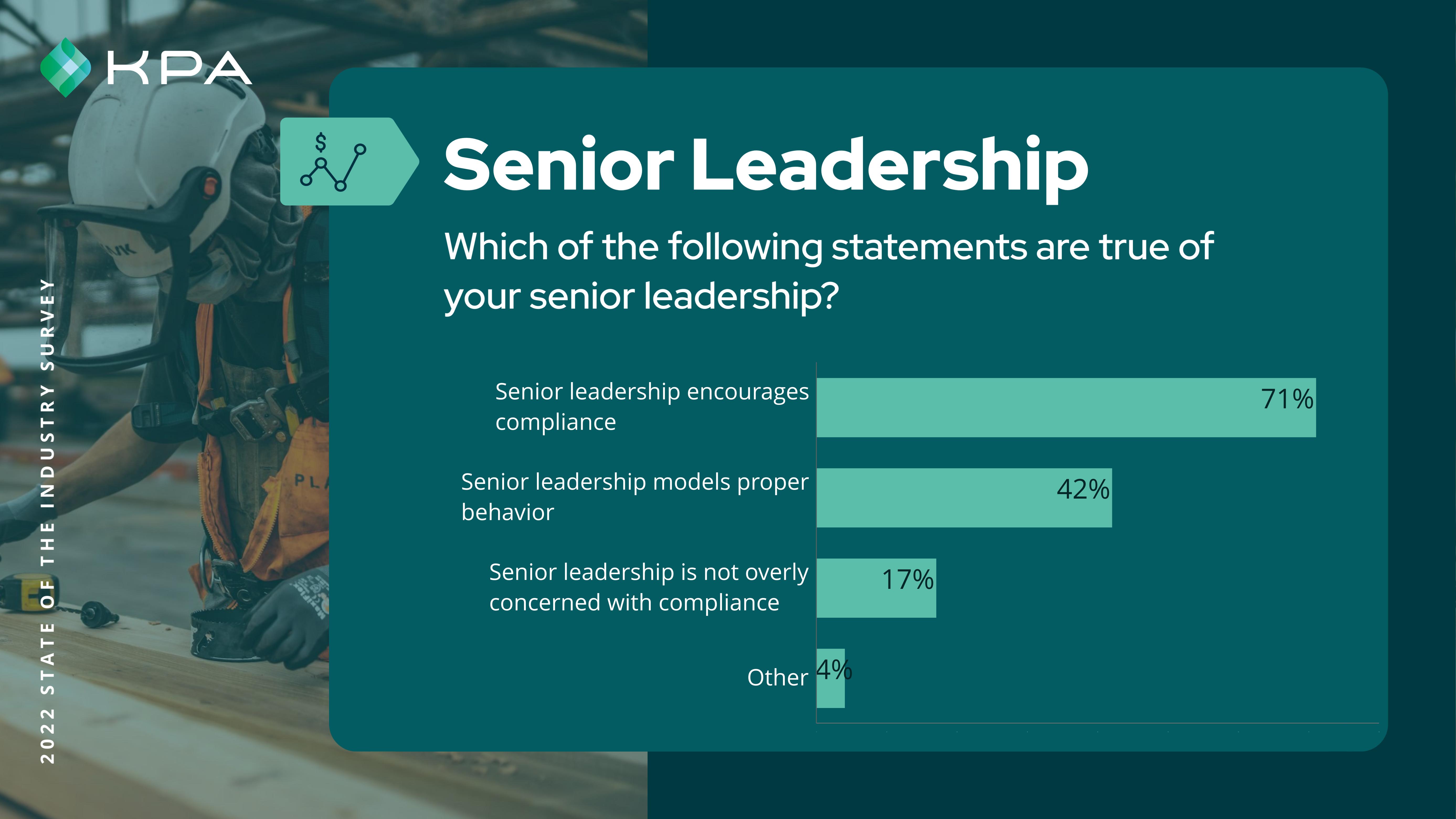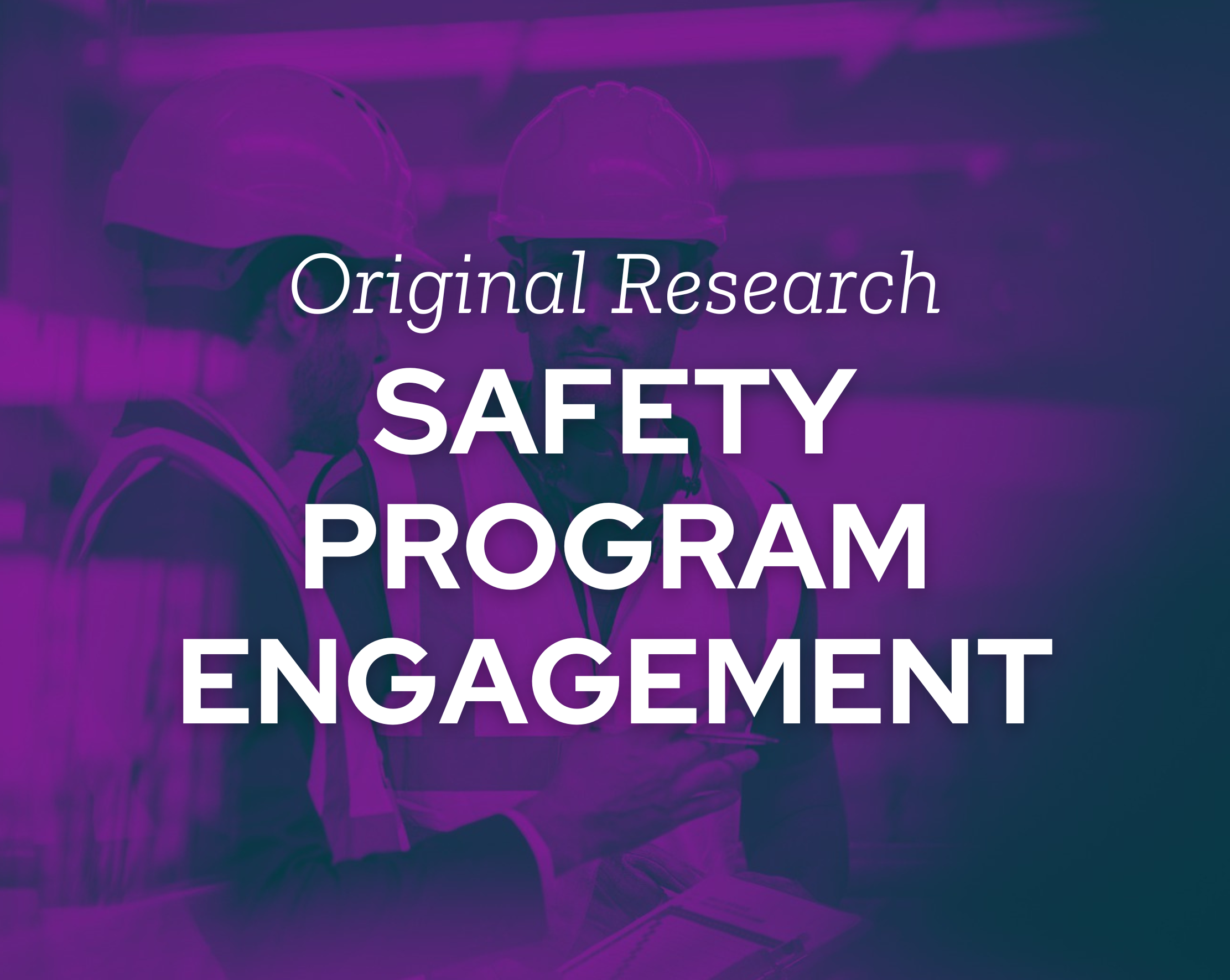How Your Peers Rated Their Safety Program Engagement: Survey Results
We asked respondents to rate employee engagement in their safety program. Here’s what they had to say.
These are the latest study findings from this year’s State of the Market: EHS Program report. It’s our third year partnering with EHS Today on the study, surveying trends in Environment, Health, and Safety programs.
As you can see in the figure below, companies typically use multiple technologies to manage their EHS program.
This is the fifth in a series of blog posts based on the study, in which we present the data and our conclusions in a quick-read format.
You can catch up on all of the articles in the:
How Engaged Are Employees in the Safety Program?
Only 42% said “good” or “excellent.” About a third (37%) rated engagement as “average.”

Differences Between EHS Software Users and Non-Users
Respondents who use EHS software were more likely to rate their employees’ engagement as “good” (45% compared to 30%) and less likely to rate it as average, fair, or poor.
Mobile Access to Safety and Training Information
A likely factor in safety program engagement is mobile access to the necessary information. We asked respondents if their workers in the field have access to safety info, training, and documents, at any time on their mobile devices.
Nearly half (46%) of respondents said yes, their workers in the field have mobile access at any time.
From 2021 to 2022, mobile access to safety and training information has increased from 38% to 46%.
Differences Between EHS Software Users and Non-Users

Those who use EHS software are more likely than those who don’t to report that workers have mobile access to training and documentation (56% compared to 40%).
Download the full study to learn how high-performance EHS programs elevate safety as an organization-wide priority.
Senior Leadership Involvement in the Safety Program
Another likely factor in employee engagement is how involved senior leadership is in the safety program. We asked respondents to indicate which of three statements characterized their senior leadership’s involvement in their safety program.

The majority of respondents (71%) reported that senior leadership encourages compliance. At the same time, only 42% stated that senior leadership models proper behavior.
Differences Between EHS Software Users and Non-Users
Half (50%) of the respondents who use EHS software report that senior leadership models proper behavior, compared to 36% of those who do not use EHS software.
“The report shows us that the focus on reducing incidents, workplace culture, and employee engagement are all connected,” said Jade Brainard, Product Director of KPA EHS Software. “If EHS software can help reduce workplace incidents and encourage more employee engagement with improved technology processes and training, it will contribute to a greater culture of safety, ensuring people feel safe and more engaged at work.”
Tying it all together:
EHS Software Supports both the Participation and the Systems Sides of Safety Programs
While reviewing the data, KPA’s Product Director, Jade Brainard stated, “In a time like this, it is crucially important to ensure that you have the right tools and resources in place so that safety doesn’t become a burden. Have tools that are that are easy, that are quick, that are practical for the environment that the workers are in. So if I’m out on a job site not having to go to a laptop or pull out a piece of paper that have something that is that is quick and easy and practical for for my my day to day process, that is crucial to increase the likelihood of getting employee engagement and adoption and leadership involvement in the overall safety program.”
So, if the results are clear, how do you choose the right EHS software for your business?
Ultimately, the best EHS software is employee-centric. It generates better safety outcomes because it’s easy to use, and people have an incentive to use it. In other words, a system needs to be built for your workforce. If it’s too complicated, unwieldy, or unintuitive—if it doesn’t align with their existing workflows—they won’t use it.
To determine if a solution is the right fit for your organization, ask the following questions:
Are self-guided forms available?
EHS reporting should take minimal time and effort on the employee’s part.
Can every user access forms and an information library?
If the system creates silos, it’s hardly better than a spreadsheets-and-binders approach.
Is the solution mobile-ready?
Business today happens on phones. Any employee should be able to quickly pull out their mobile device and enter information at a moment’s notice.
Are data dashboards included?
Any software you purchase should have strong reporting and dashboard capabilities. Again, ease of use is critical. Keep in mind that EHS might not be a user’s only job. When someone’s busy, they should be able to log in and find the exact data information they need, when they need it.
Want help making a smart decision? Grab a copy of the EHS Software Buyer’s Guide.
KPA EHS – The Backbone of Your Safety Program
KPA EHS helps you develop a comprehensive EHS program that harnesses technology, best practices, and the concerted efforts of your workforce to maintain a safe and productive workplace.
Introducing an EHS software platform tailored to the needs of your business. Manage your safety program in an all-in-one system designed to engage your employees, instill a culture of safety, and enable regulatory compliance.

